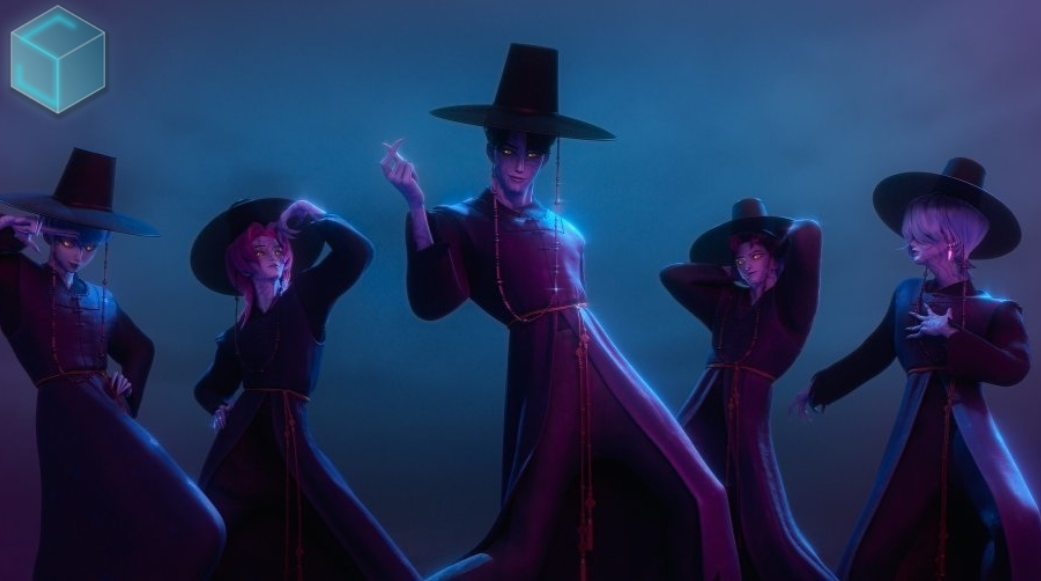.png)
August 20, 2025
Nostalgia, Mother Mother’s latest album, is one of those rare creations. It invites us into a world where lightness isn’t escapism—it’s a form of resistance, a beacon of hope, and a path forward....
Read more
August 19, 2025
When Anna of the North released “Lovers” in 2017, it was already a dreamy synth-pop gem, filled with wistful vocals and lush production that captured the ache of young romance. But it wasn’t until...
Read more
August 19, 2025
“Let Me Know” ft. Future started out as a moody, late-night playlist type of track, the kind you blast in your car pretending you’re in a music video while stuck in traffic. But now? It’s become...
Read more
August 19, 2025
“Your Idol” stands out in Kpop Demon Hunters not just as a catchy track, but as one of the most self-aware songs in the whole project. At first listen, it has all the hallmarks of a classic K-pop...
Read more
August 19, 2025
If you’ve scrolled TikTok, Insta, or literally any corner of the internet in the past few weeks, you’ve probably heard it: the fizzy, feel-good bop known as “Soda Pop” by the Saja Boys. Straight...
Read more
August 19, 2025
Skai Is Yourgod didn’t just drop a song, he dropped a cultural grenade. His track “Stacks From All Sides” has taken TikTok by storm, and the secret sauce? A cheeky little sample from Beetle on...
Read more
August 19, 2025
After 70 weeks at No. 1 with “Too Sweet,” Hozier’s reign on Billboard’s Hot Rock Songs chart comes to an end as newcomer Sombr takes over with...
Read more
August 19, 2025
Charli XCX brought her groundbreaking Brat era to a poignant close Friday night during an electrifying performance at South Korea's One Universe Festival. The pop innovator marked the final...
Read more
August 19, 2025
Taylor Swift’s appearance on Travis and Jason Kelce’s New Heights podcast drew 1.3M live viewers, breaking YouTube records and sparking buzz with details about her new album The Life of a...
Read more
August 19, 2025
After a six-year silence, Chance the Rapper is officially back. On August 15, 2025, he will drop his sophomore album, Star Line, marking a new chapter filled with growth, travel, and creative...
Read more
August 19, 2025
Lana Del Rey’s new song takes aim at Ethel Cain, referencing an alleged personal rift involving Instagram posts, a mutual ex, and behind-the-scenes remarks...
Read more
August 15, 2025
The music industry collectively lost its composure when Taylor Swift announced her twelfth studio album The Life of a Showgirl, with everyone from Sabrina Carpenter to Caitlin Clark publicly...
Read more.png)
Reverb can be a powerful tool in drum recordings, adding depth, space, and character to your drum mix. However, using it correctly is essential to ensure your drums don’t sound too muddy or distant. In this article, we'll explore how to apply artificial reverb to drum recordings effectively and look at how famous music creators, like Phil Collins, have mastered this technique to create iconic drum sounds.
Reverb creates a sense of space in your mix by simulating how sound behaves in different environments. For drum recordings, reverb can help place the drums in a specific acoustic context, whether it’s a small room, a large hall, or even an open arena. However, applying reverb to drums can be tricky because of the different elements involved – each with unique frequencies and dynamics.
In your current setup, you have five mics: two in front of the drum set to capture the low end, two overheads directly above the kit to capture the highs, and a snare mic. The challenge you’re facing is deciding whether to apply reverb to only the close mics (like the snare mic) or to the room mics (the overheads and front mics).
Here are some tips to help you decide how to apply reverb to your drum tracks:
A great example of a music creator who mastered the use of reverb on drums is Phil Collins. In the iconic song "In the Air Tonight," Collins used a technique known as "gated reverb" to create a powerful, punchy drum sound that became a hallmark of the 1980s. This technique involves applying a heavy reverb to the drums, particularly the snare, and then using a noise gate to cut off the reverb tail abruptly. The result is a reverb that sounds big but controlled, giving the drums a dramatic and distinctive sound.
Phil Collins' use of gated reverb shows how creative reverb application can make drums sound larger than life while maintaining clarity and impact. You can experiment with a similar approach by using gated reverb on your snare mic or applying it to the whole drum bus to achieve a cohesive, punchy sound.
The best approach to applying reverb depends on the sound you're aiming for and the unique characteristics of your drum kit and recording environment. Experiment with different reverb types, levels, and mic placements to find the sound that works best for your project. Remember, reverb is as much an art as it is a science – so don’t be afraid to trust your ears and get creative!